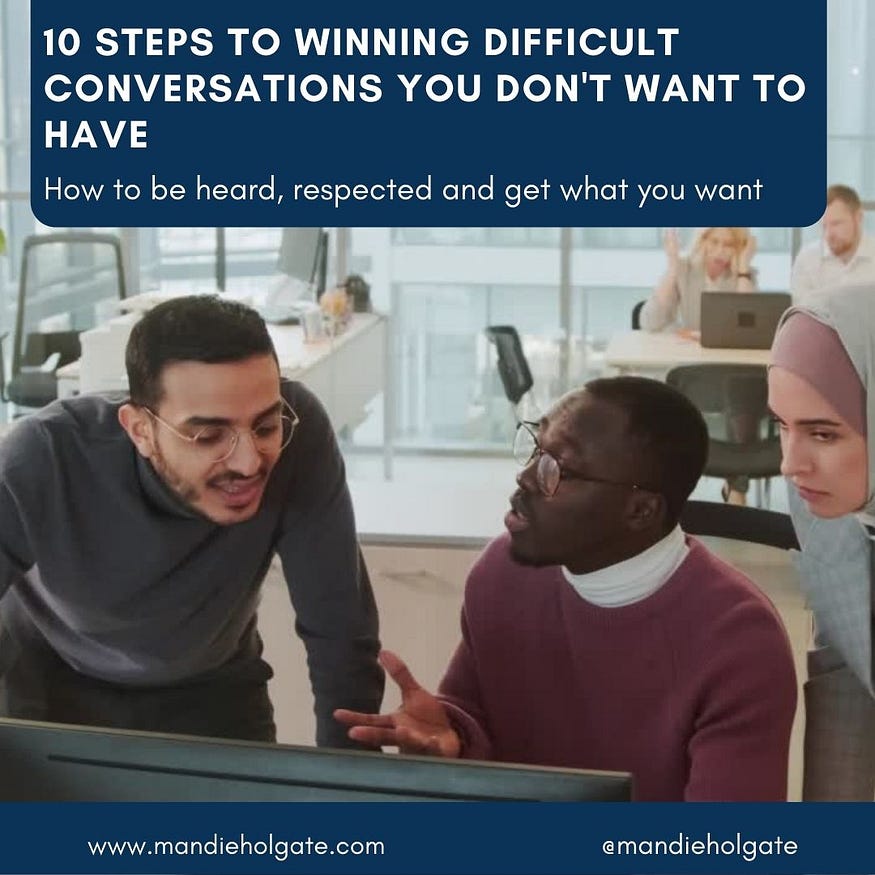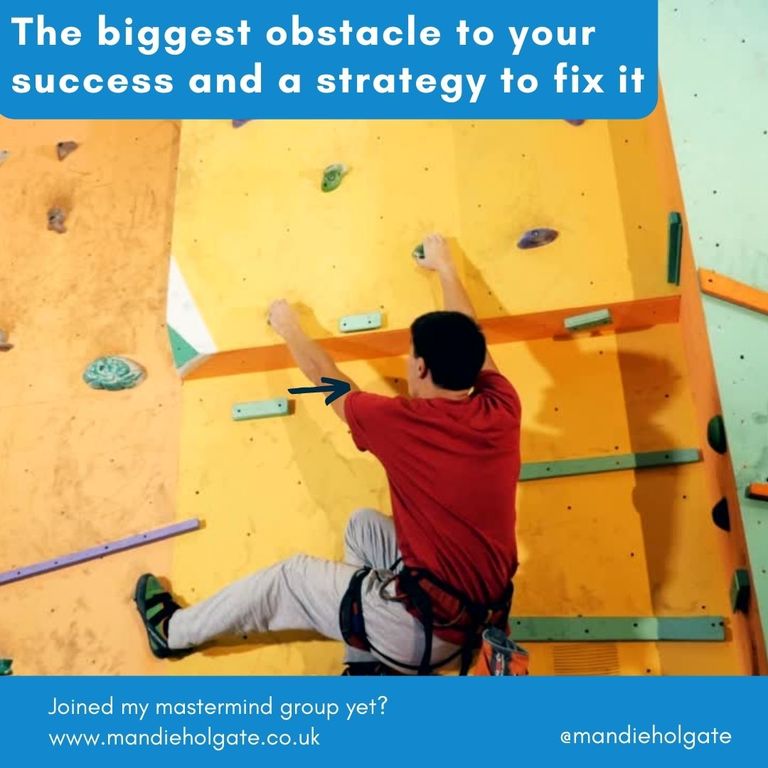10 steps to winning difficult conversations — the ones you really don’t’ want to have!
Whether it’s confronting your boss, a member of staff, your Mum, your child’s teacher or the plumber who promised to finish the shower 2 weeks ago, difficult conversations aren’t easy.

I’ve coached thousands to have those icky conversations that you put off. Here’s your quick guide on how to have those tough conversations, get the result you want and ensure both parties leave happy.
1. Assume good.
When you think about the conversation you don’t want to have, you are assuming there is going to be swearing, doors slammed, bad words, tears, smashed plates and someone hating you for eternity. The fact is that this rarely happens, but your brain is in charge, and you have let it run crazy wild like a 5 year old on too much candy.
Stop and think about what you want to see happen. I am going to teach you how to have win win conversations and relationships — even with the passive aggressive pain that knows how to provoke you.
2. Plan your outcome.
What do you want to see happen and don’t be unrealistic here. Ideally you want every conversation to end with a win win conversation building a win win relationship (I learnt about those from Bob Burg — check him out, great guy.) You don’t want to see them burn in the fiery pits of hell for all time — that level of negative emotion won’t do you any favours. What would be the end result you want?
3. Match — but not like your weird.
I teach a lot of people about how to communicate powerfully, whether it’s closing a deal, a networking event or getting a teacher to listen to your concerns about your child. And one way to get some on your side is to match them. Consider;
How fast do they speak?
Do they use one level or vary it?
How loud are they?
Do they pause?
Are they sat forward or back (Yes this still applies on Zoom and understanding this gives you an edge in online communication!)
Do they sit still or are they all jazz hands and big body movements?
What style of words do they like? Do they say things like “I see what you are saying” or “I hear you” or “I feel you aren’t listening to me.”
You can use this information to build rapport but a word of caution, over do this and you can look very creepy, and that other person is backing out of the room like you’re a psychopath.
Done gently you can make people feel listened to. Using phrases like “I hear where you are coming from” when they’ve used auditory language is a subtle way of connecting. People that are very good at communication naturally do this and you can learn to do it well too. Not sure on this one? Comment on my mastermind group and I will guide you.
4. Sacrifice.
To do well in difficult conversations know where your boundaries lie. What would you accept at the minimum? What would push you too far and make you walk away? Know in advance where you will give a little.
5. Internal confidence.
Note the word internal. There is a big difference between internal confidence and external confidence. One doesn’t’ alter on a good day or a bad, and the other does. If you build your inner confidence you can deal with difficult conversations a lot easier. I’ve so many strategies to do this, start with the why I’m Awesome Doc — write down on an A4 piece of paper on both sides, why you are awesome. Often there is a gap between what you believe to be true and the facts. This document helps bridge that gap. So don’t hide the finished document away!
6. But Mandie, what are they thinking!
You’ve got to worry less about what others are thinking. I know that’s easier said than done and I spent my life dealing with corporate team’s internal dialogue and business owners fears about what people might think of them. If it really worries you — ask them. Stop assuming and ask. But by building your internal confidence you can handle anything that people are thinking, because let’s be honest there are billions of people on this planet — you aren’t going to get on with them all.
7. State the facts.
To do this you need to know them in advance. Take out the emotions and word the facts before the session. Fact — You said X would happen and it has not. Fact “We agreed on X and not Y.” It’s not easy taking the emotion out of it so know your facts in advance.
8. Ditch the why
Coaching style questions are genius for getting people to do what you want them to do. They take away judgement and opinion and enable honest dialogue. For instance ditch any conversation that starts with “Why” and swap it to “What are the reasons this has……” this enables people to speak without believing you’re judging them — even if you are! I’ve got tons of awesome questions you can ask. Head to my website to learn some crackers or message me. But pre difficult meeting play out some questions to ask and some phrases to ditch.
9.Next!
Before you meet, what do you want to see happen next. It is one thing to know the outcome you want but what will be the steps to get you there? What would you like that to look like? Laying this out in black and white means there can be no “Oh I didn’t think you meant that” Passive aggressive types and those that aren’t going to listen no matter how compelling your argument will be good at moving the goal posts, so be crystal clear on what they are. Make sure they are put in writing if necessary and don’t be frightened to set a date to revisit the difficult conversation. You can do this now. Difficult conversations aren’t going to hold you back, are they? And lastly…
10.Stop talking
A big mistake people make in negotiations and in difficult conversation is they keep talking. Stop talking. State what you want to say, make them feel heard (repeat back what they’ve said to help them feel heard using the matching language) tell them where the boundaries lie and what you want to see happen next and then stop talking. This is powerful because people hate silence. When I get people to stand on a stage and say a sentence and then be quiet for 2 seconds, they rarely manage it, because seconds seem to take hours! So, if you stop talking, they will start. If you have stated your position, said what you want to see happen next, now let them talk. There may be an awkward silence but if you can become comfortable with awkward silence like a 1970’s library you will win. If it helps you can count the seconds — how long will you wait?
As always let me know how you get on, feel free to like this post and share it and ensure you are following me for the next one.
Got something you need help with?
Email me or connect on social media and I will write something especially for you — no one will know that.





